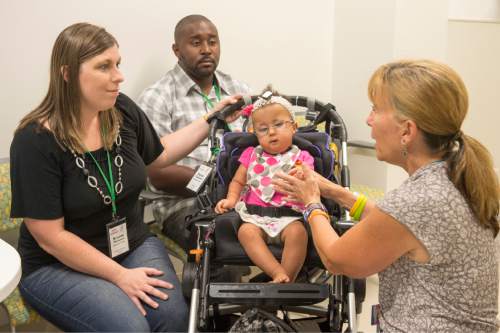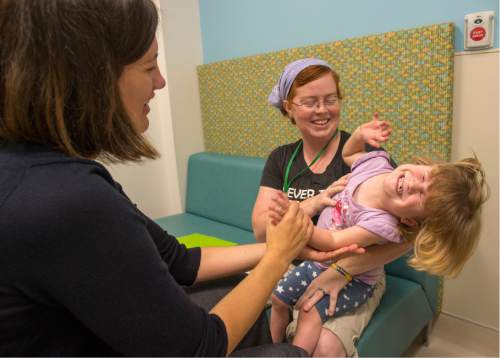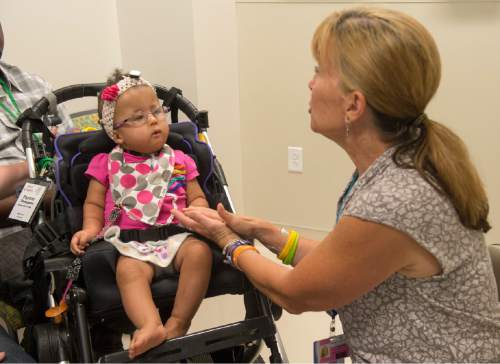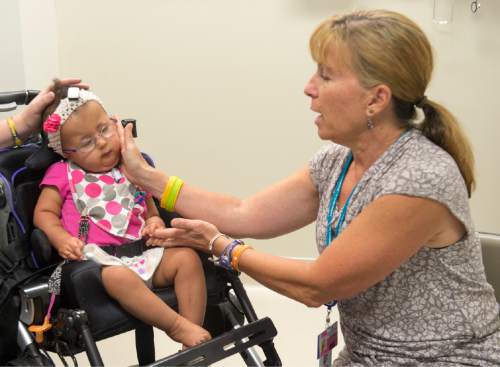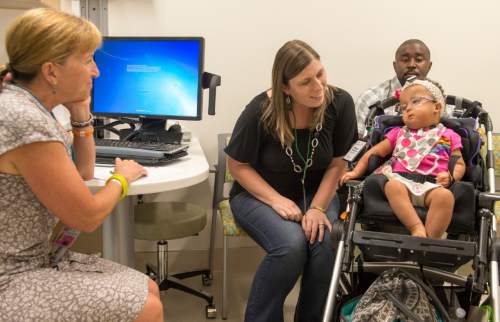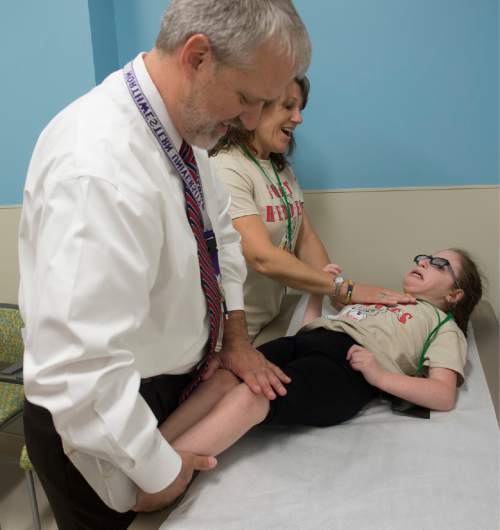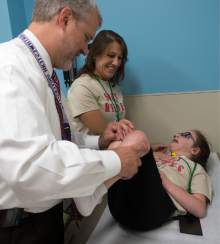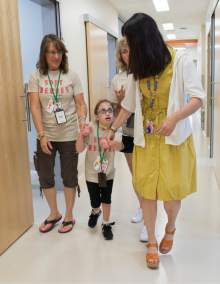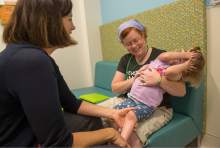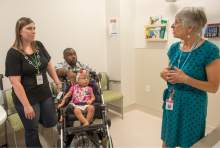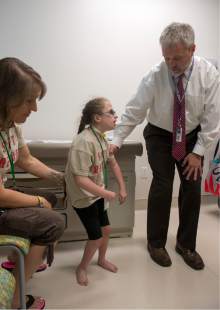This is an archived article that was published on sltrib.com in 2015, and information in the article may be outdated. It is provided only for personal research purposes and may not be reprinted.
Kris Holladay's daughter Kari, who charmed friends and strangers with her curiosity, "was a magnet."
She still is, even decades after her 1987 death from pneumonia related to trisomy.
The support group her mother co-founded at home in Tooele has gone international in reach. The Support Organization for Trisomy 13, 18 and Related Disorders (SOFT) is in town for its annual conference this week.
Dozens of families are attending training, support meetings and doctors' consultations held by the nonprofit. Primary Children's Hospital is hosting visitors with fatal genetic conditions similar to Kari's, some of whom have lived about 20 times longer than expected.
Among babies with trisomy — the presence of an extra chromosome — 5 to 10 percent die in their first year of life. Of those surviving infants, only half will live to their fifth birthday.
Some at the Salt Lake City conference have defied the seemingly insurmountable odds, reaching their 20s.
Nationally, about 25 patients in SOFT are over 20 years old, hailing from such places as Seattle, Oklahoma City and Rochester, N.Y.
"This is a congregation of families from around the world," said Primary Children's geneticist John Carey, a founder of the annual conference, which is held in a different city each year. "It's really almost like an exchange."
For some, including an expectant mother who received a neonatal diagnosis in recent months, Carey said, the reality of the syndrome is just coming to light.
Trisomy is the presence of three chromosomes instead of the usual two. There are multiple versions: People with three No. 21 chromosomes have trisomy 21, known as Down syndrome. An extra 13 or 18 chromosome can cause eye problems, cleft lip and palate, difficulty feeding and heart problems.
For most children at the event, their conditions prevent them from talking, but many communicate in other ways. All need help walking and older patients use wheelchairs.
Most pay their own way to the conference, but some financial aid is available through private donations to the group.
Morghan Kuben, an 18-year-old high school student from Houston, attended the conference in Salt Lake City for the second time. Kuben, who has trisomy 18, also came to Utah with her parents as an infant in 1997, not long after having open-heart surgery at seven weeks old to correct a trisomy-related defect.
She cannot talk, but she's entering her sophomore year of high school and manages to roll her eyes at her parents. She is slowly progressing toward walking without help.
"We want her to be the best person she can be," said Kuben's mother, Faye Kaufman, who said she was glad to learn more about her daughter's genetic mutation at this year's event. "We wouldn't want any different for her than any parent would want for their kid."
Kris Holladay learned her baby girl had trisomy 18 in 1977, shortly after giving birth. Doctors said Kari would be lucky to survive her first few months.
Holladay and her husband, Hal, turned to Carey for their daughter's care and for guidance. And they found another mother in Utah whose child had the same diagnosis and joined with her to start the advocacy group in 1980.
More families from around the state and Idaho also joined, but growing the network was not easy.
Some doctors snubbed the group, saying it gave families unrealistic expectations for their dying children.
The group's "message of value, respect and hope," said Kris Holladay, "was misinterpreted as false hope in their opinion."
Still, many families wanted to connect, and SOFT held its first conference in 1987 in Salt Lake City, with people coming from across the country.
Months later, Kari died from pneumonia related to her trisomy. But Kris remained involved in the group, which has continued to grow. Conference attendees this week came from as far as Uruguay.
Twitter: @anniebknox


